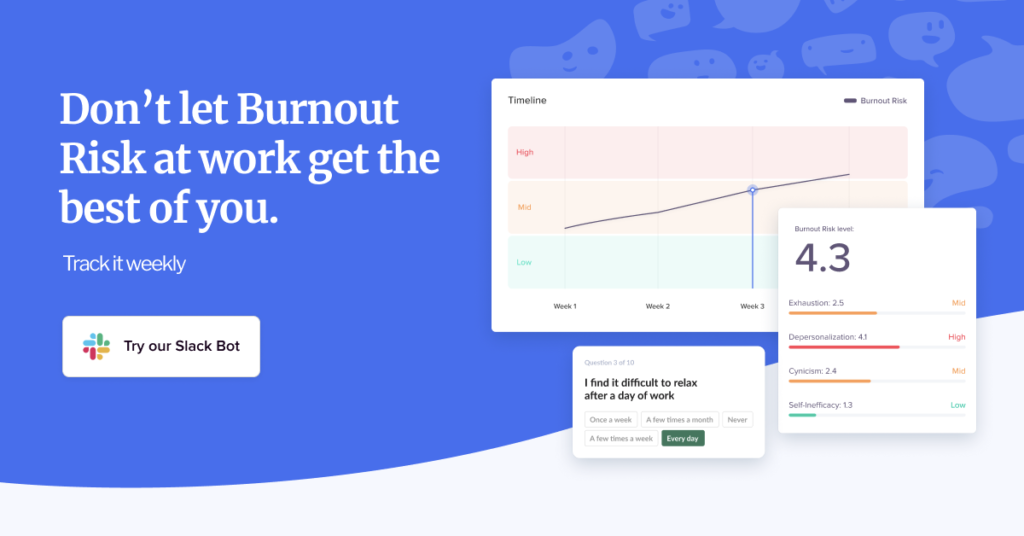Pato Rocca, VP of Engineering at Nubank, the US$10 billion digital bank, sat down with us for a super in-depth interview. It was so interesting that we didn’t want to cut anything out, but in order to give you a great experience we decided it should be a two-parter. In this first part, Pato shares stories on his beginnings in tech, what he initially aimed for, his hiring strategy and how he wooed his colleagues in Brazil. Let’s dive right in.

Pato Rocca in the making
Let’s start from the very beginning. When did you decide to dive into the tech industry? What did teenage Pato Rocca dream of?
What’s interesting is that I initially wanted to be a professional athlete, but the closest thing to it was to be a PE teacher. Back in 2001 I enrolled for PE and there were like 600 people trying to get in. At the same time, I enrolled at Engineering school and saw an opportunity in the numbers: I was the only one from my class who had opted for engineering so that was that! Back then there weren’t a lot of companies that did product development in Argentina, only service and IT related. At the beginning, I worked at local companies but soon enough I transitioned to international companies. 2001 was a very trying time for Argentina for the huge economic crisis, the country became this huge talent pool, and these companies needed to fill leadership roles.
And how did that go?
So, by the time I was 22 or 23 I was already leading a team, without really having any corporate experience leading a team, but what I had was experience leading sports teams, so that helped and I was able to grow professionally quite fast. By the time I was 25 I was managing distributed teams over three countries. After that I was able to become Director and lead a whole company, from A to Z, so, not only everything engineering-related, but also build a company culture, hiring, and how to successfully manage distributed teams. That gave me the opportunity to build and strengthen leadership skills that perhaps the engineering world on itself wouldn’t have given me. I was able to generate an impact by acting with empathy and being close to people, having people feel included within the culture and the company’s vision. It was about connecting with people, inspiring them, and doing that without having to dig into salary or things like that. If people find meaning, a daily driver, they feel like they’re a part of something. And it’s something so simple to say and do, but few people actually do it.
On team building and managing
You say it looks simple, but it does not look simple at all! Especially because people are different, have different ups and downs, and different cultures. How does that work in your experience?
I have the experience of working with a team in india. I started on the new job and saw that the india team was quite underestimated, when in reality it was filled with incredible talent and a strong sense of belonging. So, it was a matter of making them feel like a part of something. To be able to align Berlin, Argentina, Southafrica and India required a change of strategy, to find that perfect cross pollination and see what motivates them. For example, India’s number one motivation had to do with professional development, they needed to feel like they had a space within the company, they felt excluded. So I started thinking how we could make that better, taking into account that there was an 8 and a half hour time difference. So, I was in Argentina and had over 300 people in charge all over the world, so asked my teams if two times a week they could start working earlier so we had an extra hour of overlap between the teams, because the people in India weren’t responsible for their time difference. There was a little friction at first but then it came together and the indian team could see that we were making an effort. And that changes things because they go from perception-based to fact-based and they saw it and appreciated the good intentions behind it. When positive change is based on facts and not perception, the work engagement starts to rise, and when that happens, it’s the beginning of a positive cycle.
How do you, as a leader, help your collaborators have a more cohesive team?
My strategy to build a team from scratch is to understand what the team’s mission will be, even before you start recruiting, asking yourself “what will we be doing? How will we do it? What does the future look like for this team?”. You’ll go out there to try to hire people and to do so you need a quite motivational pitch to entice the talent. Some companies work for the short term and they set themselves to pay high salaries so the team can do this or that, and that’s not enticing for everybody. Others focus on the benefits, the perks, but very few were able to sustain that culture, provide technical challenges, and high pay as well. Each company has their strategy, we are in it for the long haul, we invite employees to be a part of something bigger.
On his hiring process
What’s your hiring strategy?
In my opinion, you need to hire managerial roles but not too up-level, because the problem lies in that those roles won’t be prepared to get a jump start on the day-to-day. So, if you hire a team that’s 100% software engineers without a managerial tier, it becomes difficult in terms of scalability. It’s one thing to inject talent in an ongoing company, and another thing is to promote talent in an ongoing company; it’s two completely different things. Because there’s too much risk: hiring someone that’s turns out to not be a good fit–and actually that’s a 50 or 60% risk in managerial roles, but on the other hand the risk lies in promoting someone that hasn’t done that before. That way you’re losing a software engineer and you’re generating a negative impact on the rest of the team. In smaller companies, of less than 30 or 40 people, a person in a leadership role without leadership experience could have a huge impact in organizational culture if it goes wrong. Culture is generated from the bottom and up, by people, they adopt it and feel comfortable. So, when the company is small and there’s a big change that doesn’t work, the culture can suffer greatly.
How do you know if someone is ready to make the change from individual contributor to manager?
So, I’d say that I would hire someone that has been a software engineer, has had a leadership role, and is willing to be 50% of their time leading, and 50% of their time in hands-on activities. They can be a great manager and down in the trenches as well. A big tell tale of leadership skills is emotional intelligence, I need to see if that person is really capable of managing their own emotions, and if they are resilient and empathetic. These are not easy skills to master. Also, communication is key, because at the end of a day, a leader communicates, organizes and motivates, and on top of that they ensure that the execution of taste is successful. Engineers are very rational, so it’s tough for them (for us!) to develop resilience and emotional management. It’s not hard to see a very strong technical professional with very weak soft skills.
I’ve heard before that you don’t agree with the concept of individual contributors, what do you believe in?
I don’t really agree with the term “individual contributor” because at the end of the day you’re contributing to something bigger than yourself, in a team. That’s especially true in startups, on their very beginning, everyone is doing many things, beyond your role. So, you’re a part of something bigger, as opposed to simply a part in a bigger machinery. I believe in team members, of two people or 200.
Do you have a way of measuring emotional intelligence?
By the ability to influence themselves. We ask difficult questions during an interview like “What was a moment in your career in which you were most frustrated? How did you fail? What would you do differently?”. The way someone answers these questions shows you that they have the ability to do introspection exercises, to build self-awareness, to learn from their mistakes. Another tell-tale is to know how they motivate themselves, or in contrast, how they don’t lose motivation when something happens, beyond their control. An example is an organizational decision: the person may not agree with it, but since they do agree with the overall mission of the company, they’ll keep acting towards the benefit of the company, because they can understand that somebody made a choice in a higher level, so it must be for the best. And, lastly, you can tell a lot about someone’s emotional intelligence by the way they influence or impact others around them, to be somebody’s role model. We ask them stories based on their experience on these matters.
You mentioned cultural fit, how do you go about that when hiring? What do you look for to tell if it’s a good fit?
To me, culture means behaviors and not skills. When you’re looking to create diversity, you look for core values that the organization lives by and that serve the purpose of making people feel like they are a part of something. So, you can adapt, learn things or stop doing other things, but what you can’t change are behaviors. It’s very difficult to find a perfect fit, that ticks all the boxes, but as long as there’s a general match of core values, and there are not blatant red flags, many people can prove to be a good fit. It’s about complementing each other within the company, providing a healthy disruption of the status quo, and ultimately growing together. On the other hand, if the culture is “too strong”, it’s less flexible and you get different clicks within the company, and that’s not always healthy, and it ultimately hurts the people within, because it works in a certain context, if that context changes, then you’re in trouble.
Building a team from scratch
What was your experience like when you were building a team from scratch for Nubank?
I wanted to look for resilient people, because even though Nubank was worth 3.5 billion at the time, a startup is a startup. There’s usually not a receptionist, an office manager, someone dedicated to finances. So, if you find a resilient person with a startup background allows you to build a solid team that can deal with uncertainty. The downside to people that only come from startups is that they tend to be less structured in the way they work, they’re less comfortable with a specific process, with a corporate environment. So we needed a little bit of both worlds–70% startup people and 30% corporate people–but everybody needed to be willing to be hands-on and prone to leading in the near future. So it’s a lot of pressure to avoid a “bad hire” because you need to set a precedent, to show your success in building the team that can execute and show results. If you take too long to hire, or get your offers rejected, or hire people that turn out to not be a good fit, all of that will change the perception that people have of you. They start asking questions like: why is this happening? Is it the market that’s too volatile at this stage? Is it the culture? Is it the competition? Is it the local managers?
How do deal with this outside perception from Argentina?
By paying attention to the core team creation and building from there. Also, I create meaningful relationships with the Brazil team–based on trust, communication–and that allows me to act freely and execute. I travel often to Brazil, I bring them some of our excellent wines, I go out to dinner with them. It’s important to me to be able to create a nice space outside of work, to enjoy and create meaningful interpersonal relations. This way, I make sure that they know that I have all encompassing skills of leadership, for executing, and long-term focused.
That’s all for part 1 of our interview with Pato Rocca. We’ll let you savor this one and post the second part really soon. In the second part, he tackles dealing with the complications of working during a pandemic, and a lot more. Don’t want to miss it? Follow us on Twitter to see it right off the presses!
Bonus: You’ve made it this far down the page, look who doesn’t procrastinate? So, for that, and for understanding how important it is to correctly lead a team, we wanted to give back. We created this 4-step guide that will provide you with concrete and actionable advice to start your journey towards happier and more productive teams. You can download it here for free.



